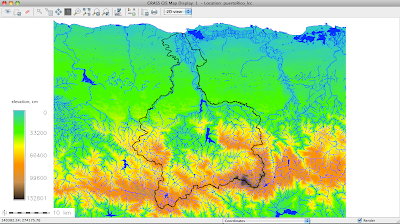 |
| Rio Grande de Arecibo basin in Puerto Rico with flowlines and waterbodies from NHDPlus |
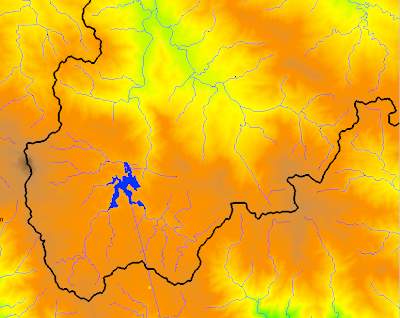 |
| Close up of the southwest corner of the watershed where Lago Garza is located |
 |
| Two lakes in the eastern-central part of the watershed |
Firstly, I ran r.watershed using SFD and MFD without filling in the depressions.
Using r.watershed with threshold of 10000 and single flow direction from the command line...
r.watershed elevation=elev_cm accumulation=rwater_accum10Ksfd drainage=rwater_draindir10Ksfd basin=rwater_basin10Ksfd stream=rwater_streams10Ksfd threshold=10000
And, the results...
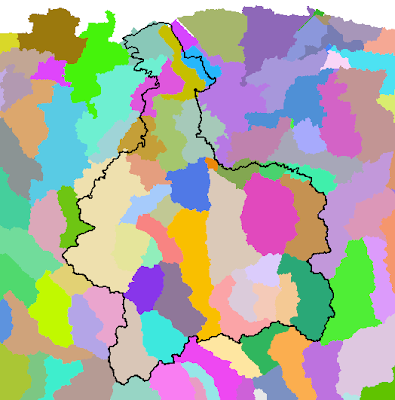 |
| Basin map from using threshold of 10000 and single flow direction |
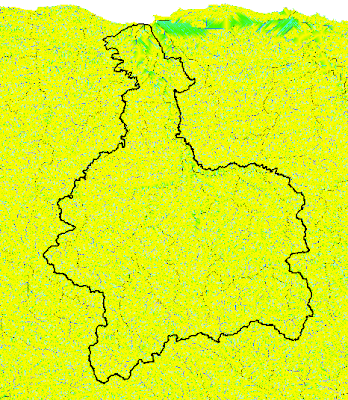 | ||||
| Accumulation map with threshold of 10000 and single flow direction |
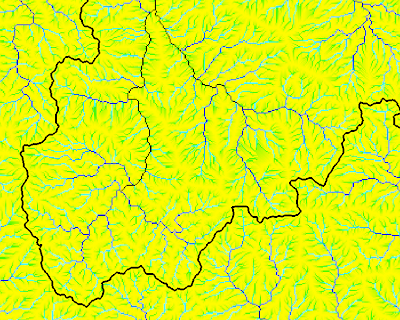 |
| Close up of southwest corner accumulation map for the watershed |
Taking the log of the accumulation map
r.mapcalc 'log_rwater_accum10Ksfd=log(abs(rwater_accum10Ksfd)+1)'
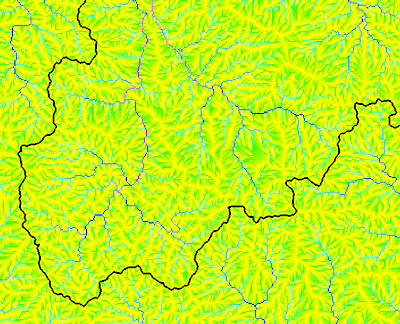 |
| log accumulation |
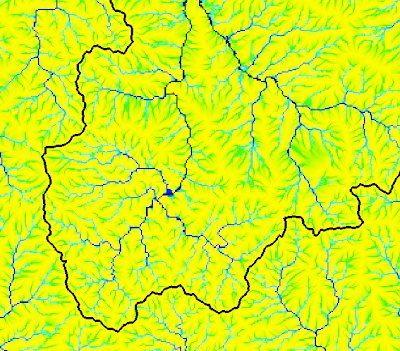 |
| Accumulation map using MFD method |
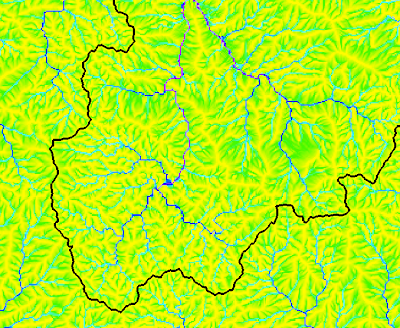 |
| Log accumulation map using MFD method |
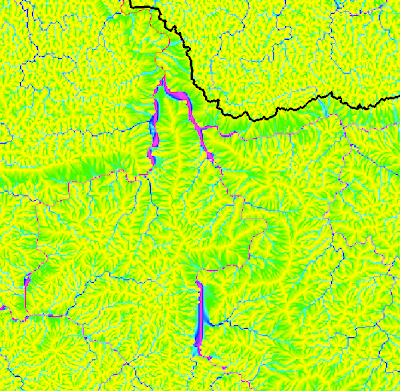 |
| Log accumulation map of the two lakes in the middle of the watershed using MFD method |
Next, I tried r.watershed after filling in the depressions.
r.fill.dir elev_cm el=elev_fill1 dir=dir1 areas=unres1
r.fill.dir elev_fill1 el=elev_fill2 dir=dir2 areas=unres2
r.fill.dir elev_fill2 el=elev_fill3 dir=dir3 areas=unres3
r.mapcalc 'depr_bin=if((elev_cm - elev_fill3)<0., 1, null())'
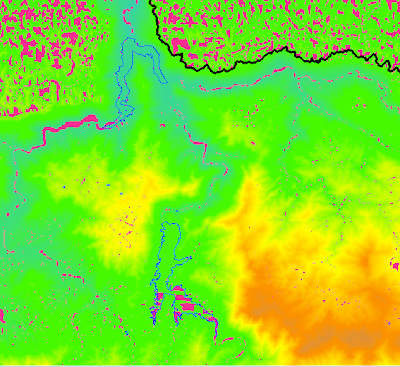 |
| NHD Plus waterbodies outlined in blue and the depression filled raster map shown in fuschia |
The accumulation map after running r.watershed with the depressions filled seems like it would represent the streams better.
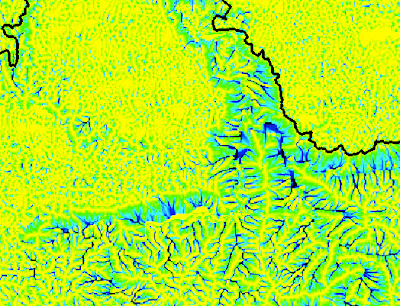 |
| Accumulation map when using depression map and MFD method |
However, the resulting streams are not as expected. I tried using each level of filled depressions, and different ways to extract the streams from the accumulation map, but none gave good results.
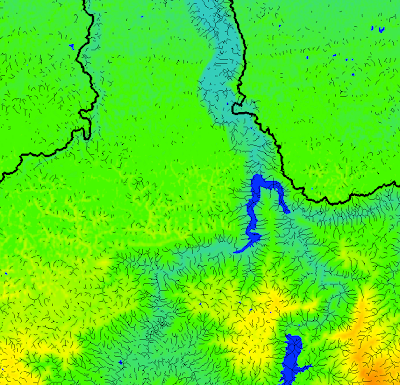 |
| Streams resulting from using a depression filled map |
Here is a map with the streams derived from using r.watershed with SFD on top of the NHDPlus flowlines.
 |
| Streams derived from r.watershed using SFD in fuschia and the NHDPlus flowlines in blue |
Here is SFD, MFD, and the NHDPlus all in one.
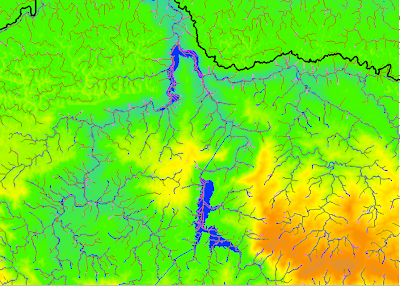 |
| NHDPlus(blue), SFD(magenta), and MFD(light brown) |
The MFD method using
r.mapcalc 'inf_rivers=if(log_accumulation>6)'
to extract the streams seems to match the NHDPlus flowlines the best.

No comments:
Post a Comment